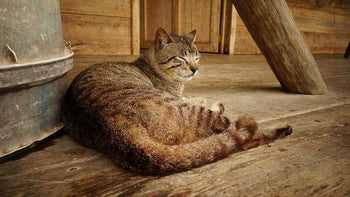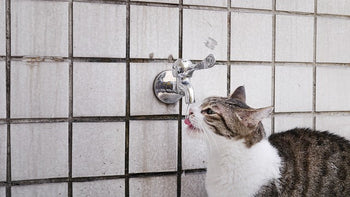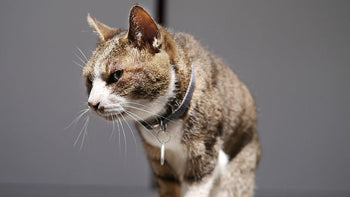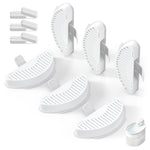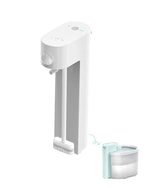If you’ve ever seen your cat rolling around in pure joy after encountering catnip, you may have wondered, what is catnip and why does it have such a powerful effect on cats? In this article, we’ll dive into the details of catnip, its effects on cats, its benefits, and how you can safely use it to enrich your cat’s life.

What Exactly Is Catnip?
Catnip (Nepeta cataria) is a perennial herb that belongs to the mint family. It contains an active ingredient in catnip called nepetalactone, which is found in the leaves and stems. This compound is what causes the euphoric reaction in many cats. Wondering what’s catnip made of? It’s a combination of natural oils, nepetalactone being the primary one, that triggers a unique response in feline brains.
For cat lovers looking for new ways to treat their pets, there are also other forms like liquid catnip, sprays, and dried catnip, making it versatile for different uses.
How Does Catnip Affect Cats?
Not all cats react to catnip—about 50-75% of cats are affected by it due to genetics. Cats that are sensitive to it exhibit behaviors like rolling, purring, meowing, and playing when they encounter it. What exactly does catnip do to cats? It binds to receptors in their nasal tissue, triggering a temporary burst of energy and euphoria. Interestingly, cats don’t need to eat catnip to react to it; simply smelling it is enough to cause these behaviors. So, do cats smell or eat catnip? Both! Cats can react by sniffing or ingesting it.
If your cat isn’t responding to catnip, don’t worry. Some cats don’t have the genetic predisposition to enjoy it. Does catnip help cats with anxiety? Yes, for some cats, catnip can have a calming effect, especially after the initial excitement wears off.
Catnip Uses and Benefits for Cats
Catnip offers several benefits for your feline friend:
- Enrichment: Catnip encourages playful and active behavior, keeping your cat engaged.
- Stress relief: After the excitement fades, catnip can leave your cat feeling calm and relaxed, making it useful for stressful situations.
- Appetite stimulation: Does catnip stimulate appetite? For some cats, yes! Offering a bit of catnip before meals can encourage them to eat, especially in picky eaters.
The benefits of catnip for cats go beyond just entertainment; it can also help reduce stress, provide mental stimulation, and even improve digestion.
Understanding the Proper Amount
Many cat owners wonder, is catnip safe? The short answer is yes, catnip is good for cats when used in moderation. In most cases, it is safe for cats to ingest a small amount of catnip. For dried catnip, you can offer your cat about 1/2 teaspoon (approximately 0.5 grams) per session, which is typically enough to elicit a reaction. For fresh catnip leaves, you can provide 1 to 2 small leaves at a time.
How to Use Catnip for Your Cat
There are several ways to incorporate catnip into your cat’s life:
- Fresh or dried catnip: You can offer catnip leaves or sprinkle dried catnip on toys or scratching posts. Wondering how to dry catnip for cats? Simply hang it in a dry, well-ventilated area for a few weeks, or use a dehydrator. If you're asking how do I dry catnip or how to dry out catnip for cats, make sure to store it in an airtight container once it’s dried.
- Liquid catnip: This is another option that can be sprayed on toys or bedding for an instant catnip effect.
- Catnip tea: Yes, you can even make catnip tea for cats! If you’re curious about how to make catnip tea for my cat, it’s simple. Just steep dried catnip leaves in hot water for about five minutes, let it cool, and offer it in small amounts. Here’s a basic catnip tea for cats recipe: use one teaspoon of dried catnip to one cup of boiling water, let it cool, and give your cat a few spoonfuls.

How to Grow and Maintain Catnip
To grow and maintain catnip, plant it in a sunny or partially shaded area using well-drained garden soil. You can either sow seeds or use cuttings, placing them directly in the soil. Keep the soil moist but avoid overwatering, and regularly prune the plant to encourage fuller growth.Typically, catnip should be watered once or twice a week, depending on the humidity and temperature.
When Not to Use Catnip
While catnip is generally safe, there are some instances where it might not be the best option:
- Overstimulation: Some cats can become overly excited or even aggressive after exposure to catnip. In these cases, it’s better to limit usage or try an alternative.
- Health conditions: If your cat has a pre-existing condition, such as digestive or neurological issues, it’s a good idea to consult your vet before offering catnip.
Conclusion
Catnip is a versatile, natural herb that offers numerous benefits for your feline friend. Whether you use it to enrich playtime, reduce stress, or stimulate appetite, catnip can be a fun and safe addition to your cat’s routine. What is catnip made from? It's a natural plant containing nepetalactone, and it’s perfectly safe for most cats when used in moderation.
So, whether you’re offering fresh catnip, making catnip tea for cats, or spraying toys with liquid catnip, your cat is sure to enjoy the experience. Just remember to use it responsibly and in moderation to avoid overstimulation.
If you're looking for other ways to delight and excite your cat, consider uahpet's toys. The natural look of our cat teasers encourages cats to stalk, pounce and engage with their prey.





